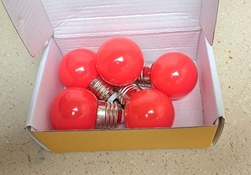My most common mistake is putting the paper upside down on the easel, emulsion side facing it..
What could help generally when starting or going back to printing after a long time is to pin a check-list next to the enlarger, with each steps, in order, and stick to that order. An attempt at a verbose version, that would be in practice shortened and adapted to different workflows :
0. Enlarger and safe light are connected to a power source. Negative sleeve is out. Air blower, notebook, pen, scissors, and the focus finder are in sight. The trays are ready (in that order from left to right : dev, stop, fix, plain water). You wear an apron or clothes that you are ready to ruin. The people that live with you have been warned no to barge in the darkroom while you're in it. Each tray has a dedicated tong, or you're wearing gloves. Darkroom door is closed.
1. Dust the negative, put it in the negative holder. In full darkness or with safe light on, switch on the enlarger, adjust easel placement and enlarger height. The picture fit, easel height and width are < paper size. The image is roughly focused. Turn off the enlarger.
2. Stop down lens to f/8
3. Put a contrast filter of the estimated necessary grade (for exemple 2.5, or the equivalent magenta value with color head)
5. Enlarger on, regular light off, safe light on
6. Fine-focus the print with a focus finder
7. Enlarger off
8. Paper box out, cut tests strips. Place one test strip shiny side up on the easel. The others go back in the box. Close the paper box.
9. /! \ CHECK : no paper in sight but the one test strip, paper box is safely closed
10. /! \ CHECK : lens is at f/8, the contrast filter is in place
11. Timer set at increments (f-stops, 2s, 5s.. depending on the preferred method and the density of the negative)
12. Cover all but a part of the paper with thick black cardboard. Turn on the enlarger timer. When the enlarger automatically switches off, move the cardboard to reveal an other part of the paper. Switch on the timer. Repeat until all the paper is exposed.
13. Dev, stop and fix for the duration recommanded by the manufacturer (see bottles or available datasheets).
14. Put the test strip in the fourth tray with plain water.
15. /! \ CHECK : no paper in sight beside the fixed test strip, paper box is safely closed
16. Regular light on, analyse the first test print.
For the subsequent tests strips and prints :
- Write down what you'll do : aperture, grade, time
- Set the lens aperture
- Set the grade
- Set the timer
- Regular light off
- Take out one sheet or one test strip from the paper box, place the paper shiny side up on the easel, close the box.
- Check : paper box is safely closed, aperture, grade and timer are the desired values.
- Turn on the enlarger timer
- dev, stop, fix, water






